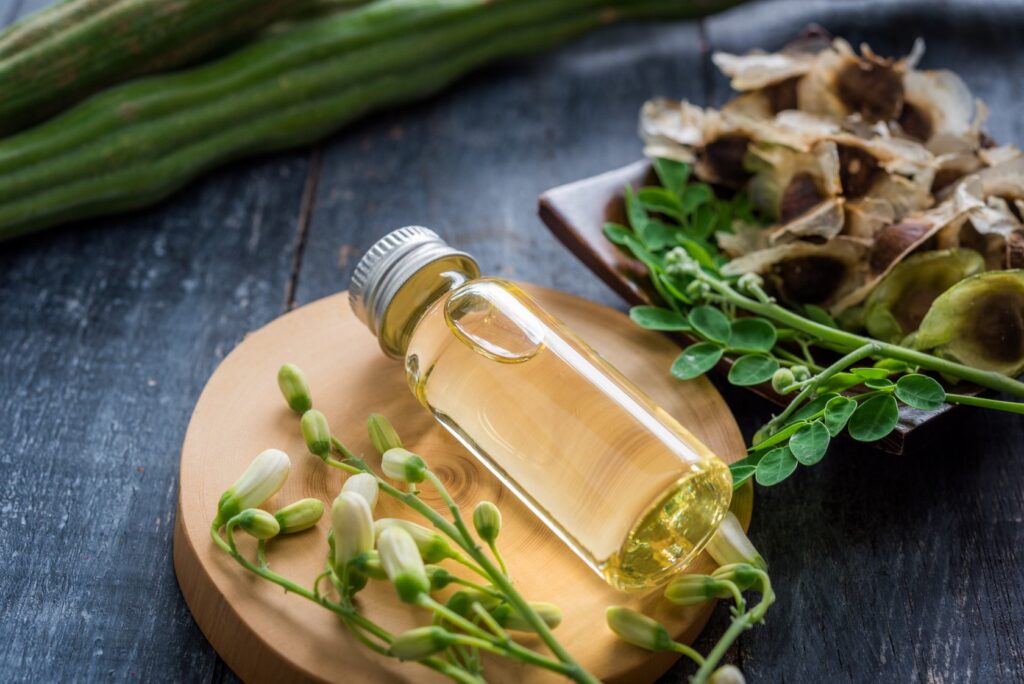Moringa, often referred to as the “Leaf of Life,” is a plant that has garnered attention worldwide for its incredible health benefits, nutritional richness, and environmental sustainability. Let’s delve into this extraordinary plant and explore its multifaceted significance.
Table of Contents
Introduction to Moringa
Moringa, scientifically known as Moringa oleifera, is a fast-growing, drought-resistant tree native to the Indian subcontinent. Its various parts – leaves, pods, seeds, and roots – have been used for centuries in traditional medicine and culinary practices due to their abundant nutrients and medicinal properties.
Historical Significance
1. Ancient Ayurvedic Medicine: Moringa has deep roots in traditional Ayurvedic medicine, one of the world’s oldest holistic healing systems. In Ayurveda, Moringa leaves, seeds, and roots were used to address various ailments and promote overall well-being. It was considered a valuable medicinal plant in ancient India.
2. Historical Documentation: Historical texts and records from ancient civilizations, including India, Egypt, and Greece, mention the use of Moringa for medicinal and nutritional purposes. These writings highlight its significance in traditional healing practices.
3. Cultural and Culinary Traditions: Moringa has been a staple in the culinary traditions of many cultures for centuries. In South Asia, Moringa leaves are used in various dishes, and its pods are a common vegetable. Similarly, in parts of Africa, Moringa is a dietary staple and a key ingredient in local recipes.
4. Historical Trade Routes: Moringa’s importance extended beyond its region of origin through ancient trade routes. It found its way to different parts of Asia, Africa, and the Americas, contributing to its global spread and significance.
5. Historical Remedies: Moringa’s leaves, seeds, and roots were used historically to address a wide range of health issues, including digestive problems, skin ailments, joint pain, and more. It was also employed as a natural remedy for malnutrition and as a source of energy for travelers.
6. Role in Agriculture: Moringa’s ability to thrive in challenging environmental conditions and improve soil quality made it valuable in historical agriculture. It was often planted to help rejuvenate and protect degraded lands.
7. Recent Revival: While Moringa has ancient origins, it experienced a resurgence in popularity in recent decades, driven by increased awareness of its exceptional nutritional value. This revival has led to its cultivation and consumption in various parts of the world.

Nutritional Profile
Moringa, often referred to as the “Miracle Tree,” boasts an exceptional nutritional profile, making it a sought-after superfood. Here is an overview of the key nutrients found in Moringa:
1. Vitamins:
- Vitamin A: Moringa is exceptionally rich in vitamin A, providing several times more beta-carotene than carrots. Vitamin A is essential for vision, immune function, and skin health.
- Vitamin C: Moringa leaf powder is a potent source of vitamin C, which supports immune health, collagen formation, and antioxidant protection.
- Vitamin E: This antioxidant vitamin in Moringa helps protect cells from oxidative damage and supports skin health.
- Vitamin K: Moringa contains vitamin K, which plays a role in blood clotting and bone health.
2. Minerals:
- Calcium: Moringa is a valuable source of calcium, important for strong bones and teeth, muscle function, and nerve signaling.
- Potassium: Adequate potassium intake supports heart health, blood pressure regulation, and overall bodily functions.
- Iron: Moringa provides iron, which is crucial for oxygen transport in the blood and the prevention of anemia.
- Magnesium: This mineral is essential for muscle and nerve function, bone health, and energy metabolism.
3. Protein:
- Moringa leaf powder is a notable source of plant-based protein, containing all nine essential amino acids. It can be particularly valuable for vegetarians and vegans looking to meet their protein needs.
4. Antioxidants:
- Moringa is packed with antioxidants like quercetin, chlorogenic acid, and beta-carotene, which combat free radicals, reduce oxidative stress, and protect cells from damage.
5. Dietary Fiber:
- Moringa leaf powder contains dietary fiber, which supports digestive health, aids in regular bowel movements, and promotes a feeling of fullness.
6. Phytonutrients:
- Moringa contains various phytonutrients, including flavonoids, polyphenols, and isothiocyanates, which have potential health benefits, including anti-inflammatory and anticancer properties.
7. Omega-3 Fatty Acids:
- Moringa leaf powder contains a small amount of alpha-linolenic acid (ALA), an essential omega-3 fatty acid important for heart and brain health.
8. Carbohydrates:
- Moringa provides carbohydrates, serving as an energy source in the diet.
9. Low-Calorie:
- Moringa leaf powder is low in calories, making it suitable for those looking to manage their calorie intake while still receiving essential nutrients.
10. Low-Fat: – Moringa is naturally low in fat, making it a healthy addition to various diets.
Health Benefits of Moringa
- Nutrient-Rich Superfood: Moringa leaf powder is a nutritional powerhouse, providing essential vitamins, minerals, and antioxidants. It is known for its dense concentration of nutrients, making it a valuable addition to the diet.
- Immune System Support: The vitamins, minerals, and antioxidants in Moringa leaf powder contribute to a strengthened immune system. Regular consumption may help the body fend off infections and illnesses more effectively.
- Antioxidant Protection: Moringa is rich in antioxidants like quercetin, chlorogenic acid, and beta-carotene. These antioxidants combat oxidative stress, reduce inflammation, and protect cells from damage caused by free radicals.
- Energy and Vitality: Many people turn to Moringa leaf powder to boost energy levels and combat fatigue, thanks to its nutrient density and natural source of vitality.
- Anti-Inflammatory Properties: Moringa exhibits anti-inflammatory effects, potentially aiding in the management of inflammatory conditions like arthritis and promoting overall well-being.
- Blood Sugar Regulation: Some studies suggest that Moringa may help regulate blood sugar levels, making it of interest to individuals with diabetes or those looking to maintain healthy glucose levels.
- Weight Management: Moringa’s low-calorie, nutrient-rich composition supports individuals in their efforts to manage their weight and maintain a balanced diet.
- Digestive Health: Moringa leaf powder promotes healthy digestion, regular bowel movements, and gut health. Its fiber content aids in digestion and supports beneficial gut bacteria.
- Skin and Hair Health: The vitamins and antioxidants in Moringa contribute to healthy skin and hair. It is a common ingredient in skincare and haircare products due to its potential beauty benefits.
- Nutrient for Children: Moringa leaf powder is used to combat malnutrition in children in various parts of the world. Its high nutritional value makes it valuable for addressing nutritional deficiencies in young populations.
- Antimicrobial Properties: Laboratory studies have explored Moringa’s potential as a natural antimicrobial agent, showing promise in inhibiting the growth of certain pathogens.
- Bone Health: Moringa’s calcium and phosphorus content contributes to strong bones and teeth, supporting overall bone health.
- Anti-Aging: The antioxidants in Moringa may help slow the aging process by protecting the skin from oxidative damage and reducing the appearance of fine lines and wrinkles.
- Heart Health: While research is ongoing, some studies suggest that Moringa may have a positive impact on heart health by helping to lower cholesterol levels and reduce blood pressure.

Culinary Uses
Moringa leaf powder is a versatile and nutrient-dense ingredient that can be easily incorporated into various culinary dishes. Here are some culinary uses and ideas for adding Moringa leaf powder to your meals:
1. Moringa Smoothie:
- Blend 1-2 teaspoons of Moringa leaf powder with your favorite fruits, yogurt, or milk alternatives for a vibrant and nutritious morning smoothie.
2. Moringa Soup:
- Add Moringa leaf powder to vegetable soups or stews during the last few minutes of cooking to preserve its nutrients. It imparts a mild, earthy flavor.
3. Moringa Salad Dressing:
- Mix Moringa leaf powder into homemade salad dressings or vinaigrettes for added nutrition and a unique green hue.
4. Moringa Guacamole:
- Enhance the flavor and nutrition of guacamole by incorporating Moringa leaf powder into the avocado mash.
5. Moringa Hummus:
- Blend chickpeas, tahini, lemon juice, garlic, olive oil, and a teaspoon of Moringa leaf powder to create a nutritious Moringa-infused hummus dip.
6. Moringa Pesto:
- Combine Moringa leaf powder with basil, garlic, pine nuts, Parmesan cheese, and olive oil to make a vibrant Moringa pesto sauce for pasta or sandwiches.
7. Moringa Rice:
- Mix Moringa leaf powder into cooked rice, quinoa, or couscous to infuse grains with added nutrition and a beautiful green color.
8. Moringa Omelette:
- Whisk Moringa leaf powder into eggs before making an omelette or scrambled eggs for a nutrient-packed breakfast.
9. Moringa Baked Goods:
- Incorporate Moringa leaf powder into muffin, pancake, waffle, or bread recipes to add a nutritional boost and a unique color.
10. Moringa Energy Bars: – Create homemade energy bars by mixing Moringa leaf powder with nuts, seeds, honey, and dried fruits.
11. Moringa Ice Cream: – Make your own Moringa-flavored ice cream by blending the powder into the ice cream base for a unique and nutritious treat.
12. Moringa Tea: – Brew Moringa leaf powder in hot water to create a soothing herbal tea. You can also add it to other herbal tea blends for extra nutrients.
13. Moringa Latte: – Mix Moringa leaf powder with hot milk or a milk alternative to create a Moringa latte, adding a dash of honey or sweetener if desired.
14. Moringa Seasoning: – Sprinkle Moringa leaf powder over salads, roasted vegetables, or grilled meats as a nutrient-rich seasoning or garnish.
15. Moringa Fruit Smoothie Bowl: – Create a nutritious smoothie bowl by blending Moringa leaf powder with frozen fruits and topping it with granola, nuts, and fresh berries.

Environmental Sustainability
1. Drought Resistance: Moringa is well-known for its ability to thrive in arid and semi-arid regions with limited water resources. Its deep taproot allows it to access groundwater efficiently, reducing the demand for irrigation and conserving water.
2. Soil Improvement: Moringa trees have a unique capacity to improve soil quality through a process known as “rhizoremediation.” Their roots release natural chemicals that enhance soil fertility, reduce erosion, and support reforestation efforts. This can rejuvenate degraded lands and promote sustainable land use.
3. Biodiversity: Moringa trees provide habitat and food sources for various wildlife, contributing to biodiversity in the regions where they are cultivated. This supports overall ecosystem health.
4. Carbon Sequestration: As trees, Moringa plants absorb carbon dioxide from the atmosphere, aiding in carbon sequestration. This natural process helps mitigate climate change by reducing greenhouse gas levels.
5. Reforestation: Moringa is often used in reforestation projects due to its fast growth and ability to thrive in challenging environments. Planting Moringa trees can help combat deforestation, protect watersheds, and restore ecosystems, contributing to overall environmental health.
6. Minimal Pesticide Use: Moringa is relatively pest-resistant, reducing the need for chemical pesticides and minimizing environmental pollution.
7. Sustainable Agriculture: Moringa can be integrated into agroforestry systems, where it provides shade and shelter to other crops. This promotes biodiversity, reduces soil erosion, and supports sustainable agricultural practices.
8. Economic Opportunities: Moringa cultivation creates economic opportunities for local communities and small-scale farmers. They can sell Moringa products such as leaf powder, oil, and seeds, generating income and improving livelihoods, which can lead to greater environmental stewardship.
9. Food Security: Moringa’s nutritional density and adaptability to different climates contribute to food security in regions facing malnutrition and food shortages.
10. Sustainable Development Goals: Moringa aligns with several of the United Nations’ Sustainable Development Goals (SDGs), including those related to zero hunger, good health and well-being, clean water and sanitation, and responsible consumption and production.
Cultivation and Harvesting
Moringa, often referred to as the “Miracle Tree” or “Drumstick Tree,” is relatively easy to cultivate, making it a valuable crop in regions with diverse climates. Here’s a general overview of the cultivation and harvesting process:
1. Climate and Soil Requirements:
- Moringa thrives in tropical and subtropical regions with warm temperatures and well-drained soil.
- It can tolerate a wide range of soil types, from sandy to clayey, but prefers slightly acidic to neutral soils (pH 6.3-7.0).
2. Planting Moringa:
- Moringa can be grown from seeds, cuttings, or seedlings. Seeds are commonly used for propagation.
- Plant seeds directly in the ground or in pots during the rainy season, as Moringa requires moisture for germination.
- Seedlings can be transplanted to their final location when they are about 3-4 feet tall.
3. Spacing:
- Plant Moringa trees at a spacing of approximately 6-10 feet between trees in rows, depending on the specific variety and local conditions.
4. Watering:
- Young Moringa trees require regular watering to establish their root systems.
- Once established, Moringa is drought-tolerant and can thrive with minimal water.
5. Pruning and Maintenance:
- Pruning can help shape the tree, promote bushier growth, and make harvesting easier.
- Regular maintenance includes removing dead or diseased branches and controlling pests if necessary.
6. Growth and Harvesting:
- Moringa trees typically start producing leaves within a few months of planting.
- Leaves are the most commonly harvested part of the tree. They can be harvested once the tree reaches a height of about 3-4 feet.
- Harvesting can be done by hand-picking the leaves, avoiding damage to the branches and stems.
7. Harvesting Seeds:
- Moringa seeds can be harvested when the pods are mature and dry. The pods should be brown and begin to split open naturally.
- The seeds can be removed from the pods and dried further before storage or processing.
8. Sustainable Harvesting:
- To ensure sustainable cultivation, it’s essential to avoid overharvesting leaves or removing all the pods from the tree. Leaving some leaves and pods on the tree allows for continued growth and production.
9. Processing:
- Harvested leaves can be air-dried in the shade to preserve their nutrients.
- Leaves can be ground into a fine powder to create Moringa leaf powder, which is a convenient and long-lasting form for culinary and nutritional use.
10. Post-Harvest Handling: – Proper storage and packaging are crucial to maintain the quality and freshness of Moringa leaves and seeds. Store them in a cool, dry place away from direct sunlight.

Future Potential and Research
1. Nutritional Security: Moringa’s exceptional nutritional profile positions it as a valuable resource in addressing global malnutrition and food security challenges. Research into its potential to combat nutrient deficiencies and support vulnerable populations is likely to expand.
2. Agriculture and Sustainability: Moringa’s ability to thrive in challenging conditions, improve soil quality, and contribute to sustainable farming practices make it a valuable asset in promoting environmental sustainability and combating land degradation.
3. Pharmaceuticals and Medicine: Ongoing research explores Moringa’s medicinal properties and its potential to be used in pharmaceuticals and traditional medicine. Studies on its anti-inflammatory, antimicrobial, and antioxidant properties may lead to the development of new drugs and treatments.
4. Functional Foods and Supplements: The popularity of Moringa as a superfood and dietary supplement is likely to grow. Innovations in food processing and supplement manufacturing may lead to new Moringa-based products.
5. Cosmetic and Beauty Industry: Moringa’s potential as an ingredient in skincare and haircare products is being explored due to its antioxidant and nutrient-rich properties. It may find increased use in the cosmetic and beauty industry.
6. Sustainable Agriculture: As interest in sustainable agriculture and agroforestry practices grows, Moringa’s role in reforestation, soil improvement, and biodiversity conservation is expected to expand.
7. Climate Mitigation: Moringa’s capacity to sequester carbon and mitigate climate change may lead to initiatives that promote its cultivation as a part of climate-smart agriculture.
8. Genetic Improvement: Ongoing research in plant genetics may lead to the development of improved Moringa varieties with enhanced traits, such as higher yield, disease resistance, and nutritional content.
9. Ethical and Fair Trade Practices: Efforts to promote ethical and fair trade practices in the Moringa industry are likely to gain momentum, ensuring that the cultivation and trade of Moringa benefit local communities and small-scale farmers.
10. Educational Outreach: Increasing awareness about Moringa’s benefits and cultivation practices through education and outreach programs may lead to its wider adoption and integration into diverse diets.
11. Regulatory Frameworks: The development of regulatory frameworks and quality standards for Moringa products may help ensure product quality and consumer safety.
Source to Get Organic Moringa Leaf Powder Capsules
| Moringa Leaf Powder Capsules |
| Organic Moringa Leaf Powder Capsules |
| Best Moringa Leaf Powder Capsules |
| High-quality Moringa Powder Capsules |
| Affordable Moringa Powder Capsules |
Conclusion
In conclusion, Moringa stands as a remarkable botanical treasure, offering a spectrum of benefits ranging from health and nutrition to environmental sustainability. Its versatility and potential pave the way for a brighter, healthier future.
